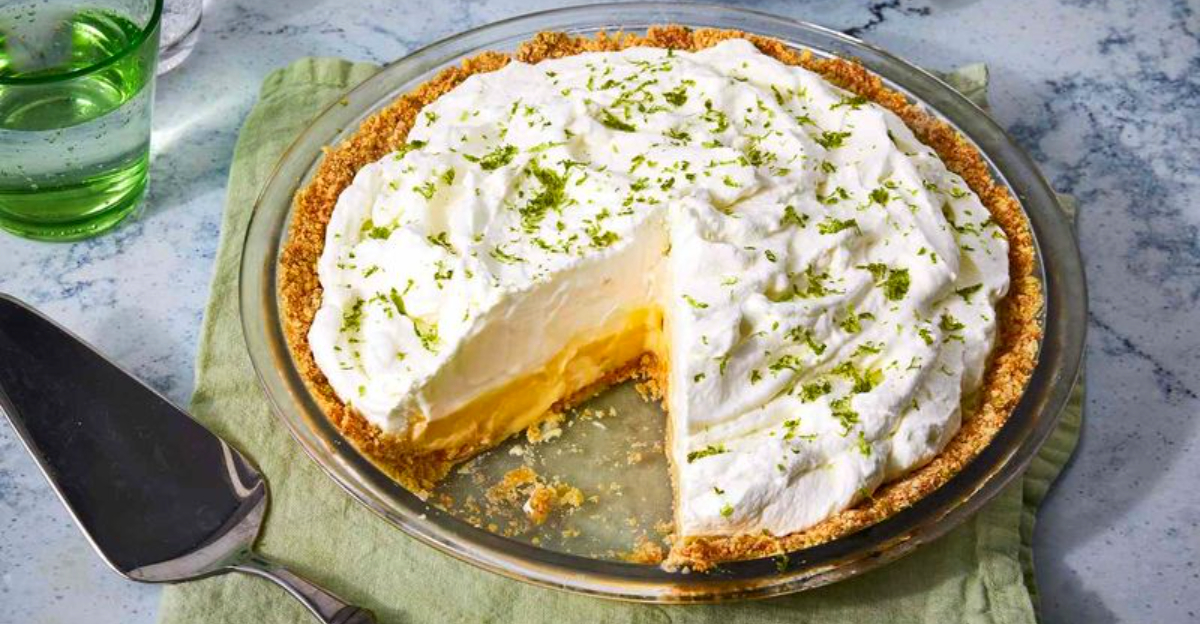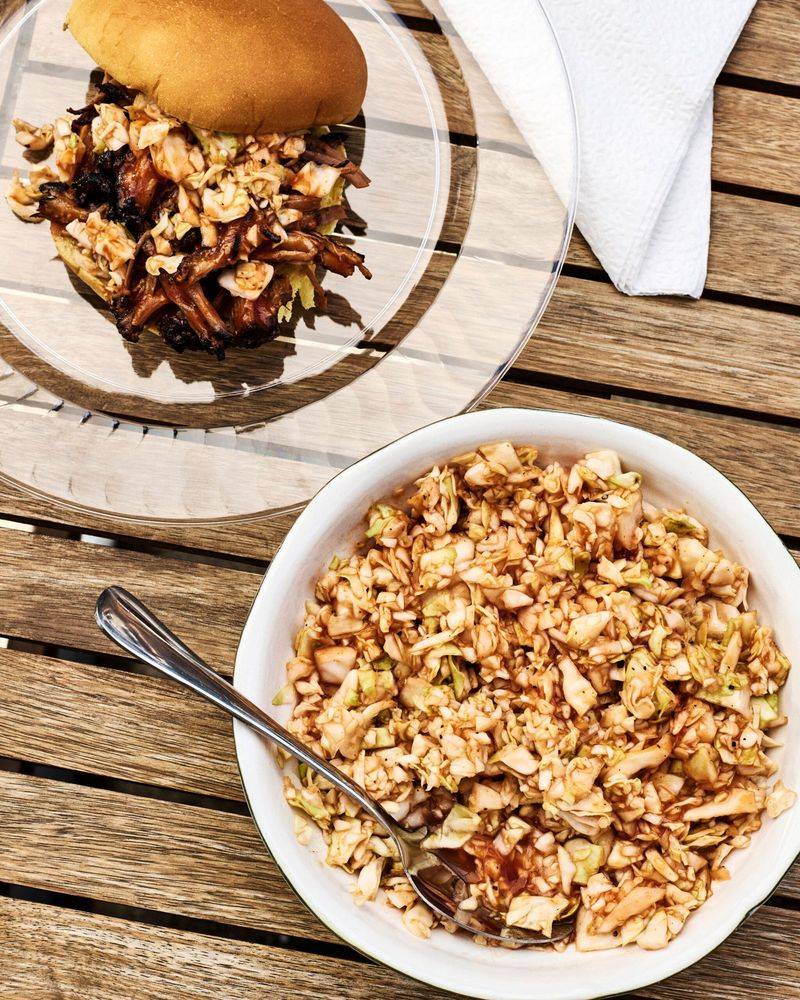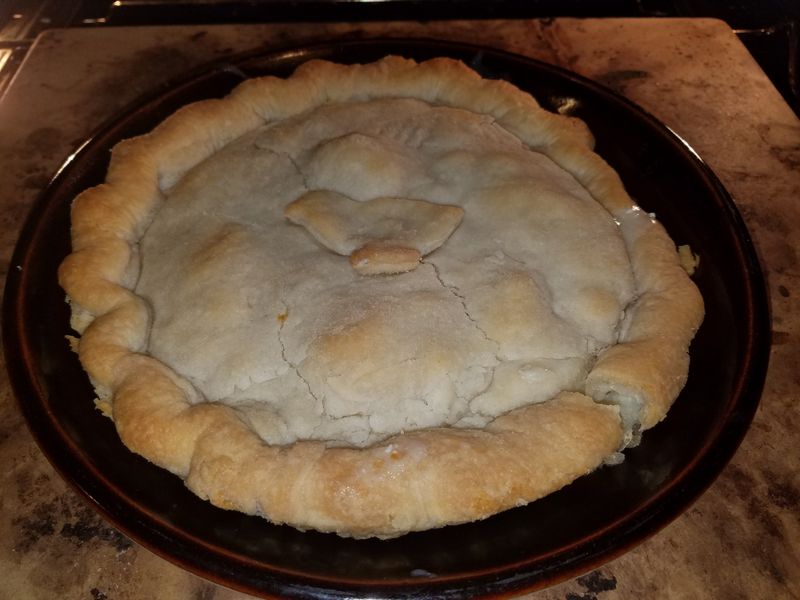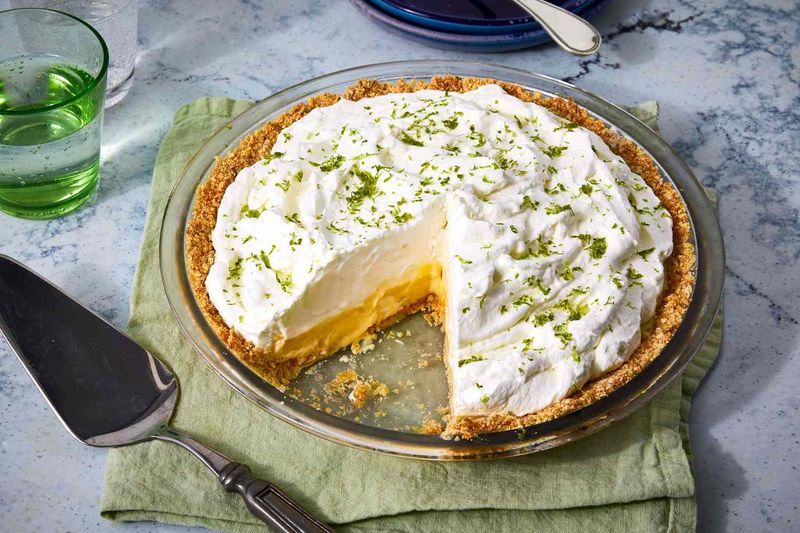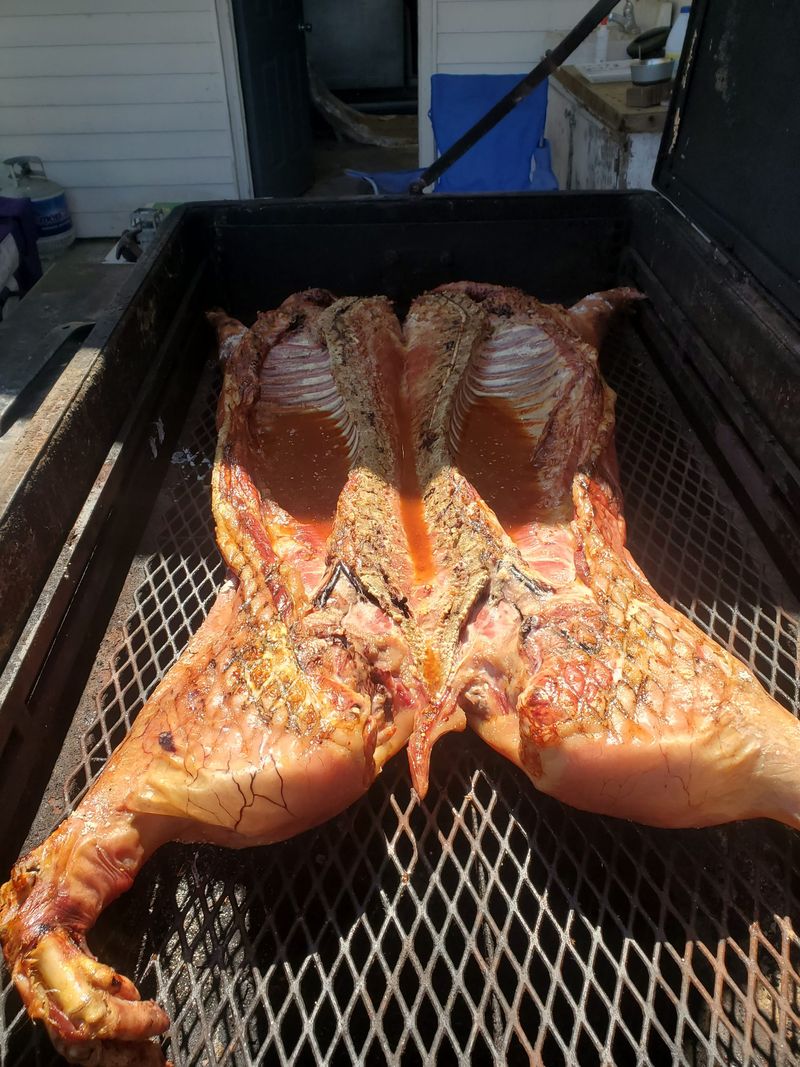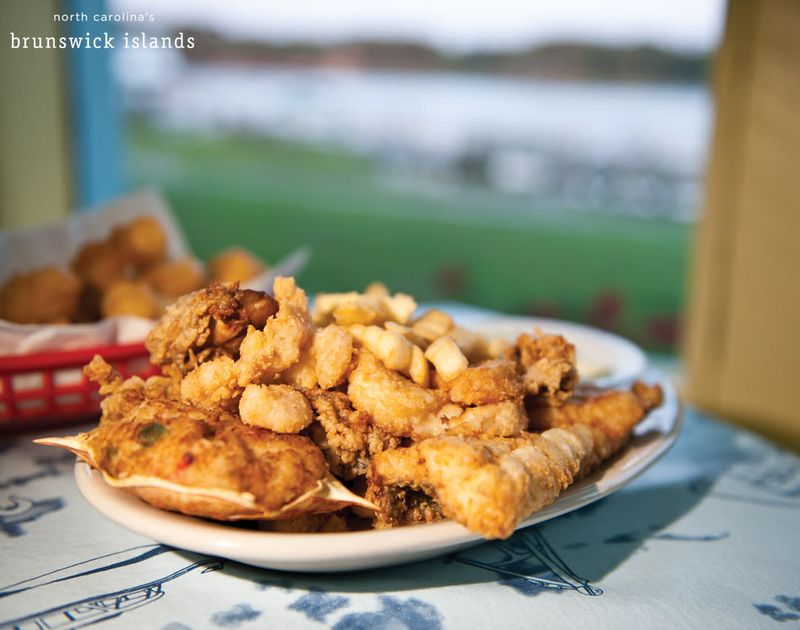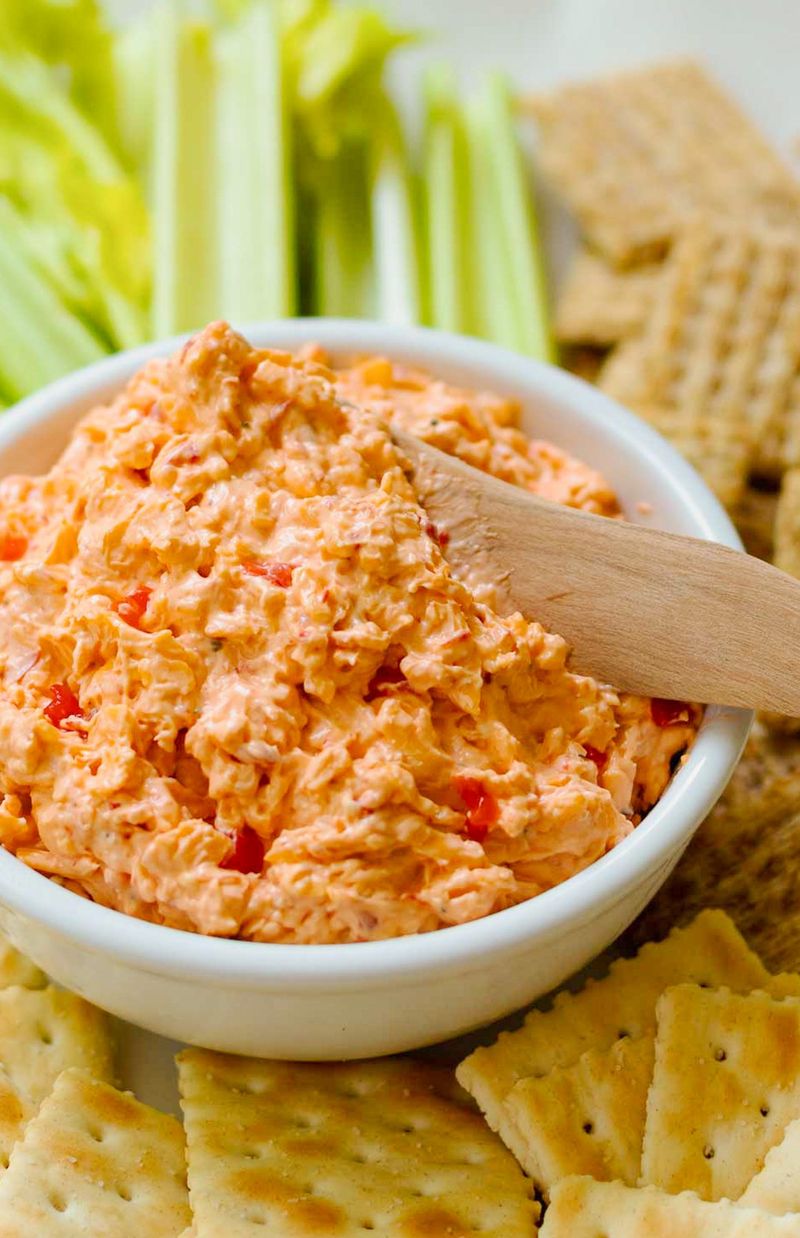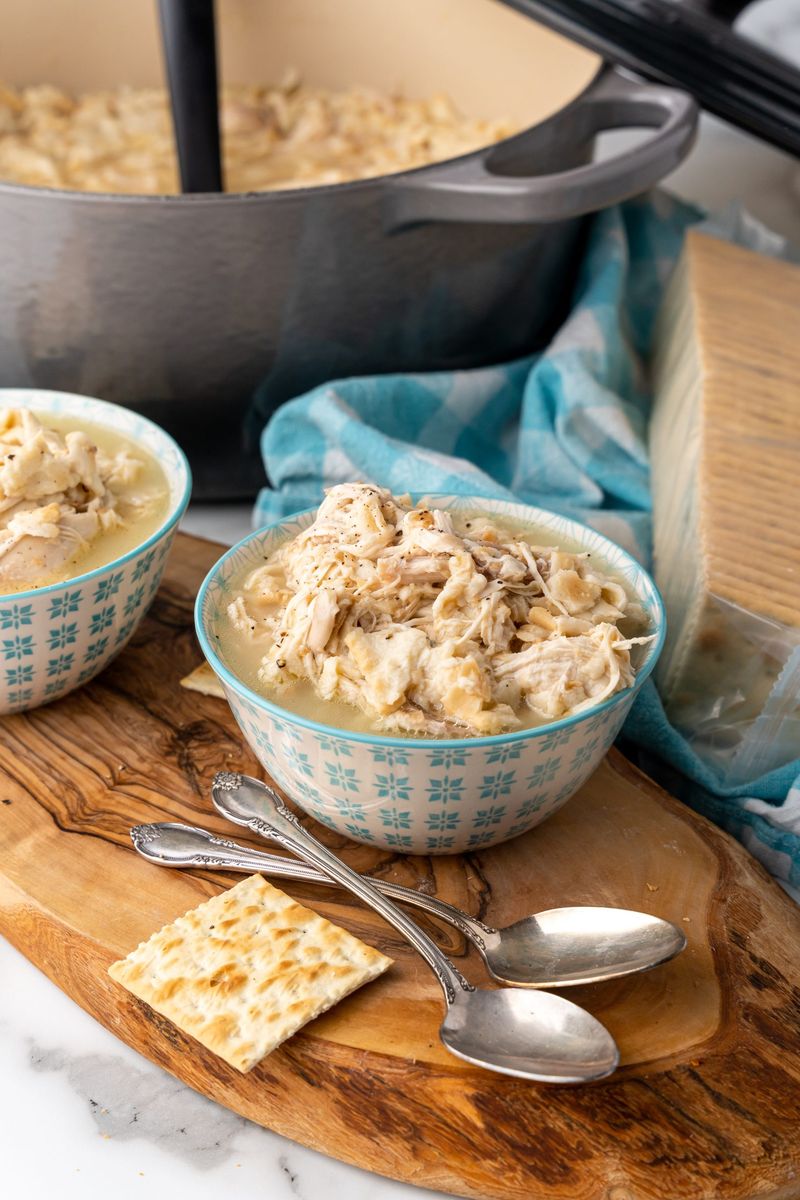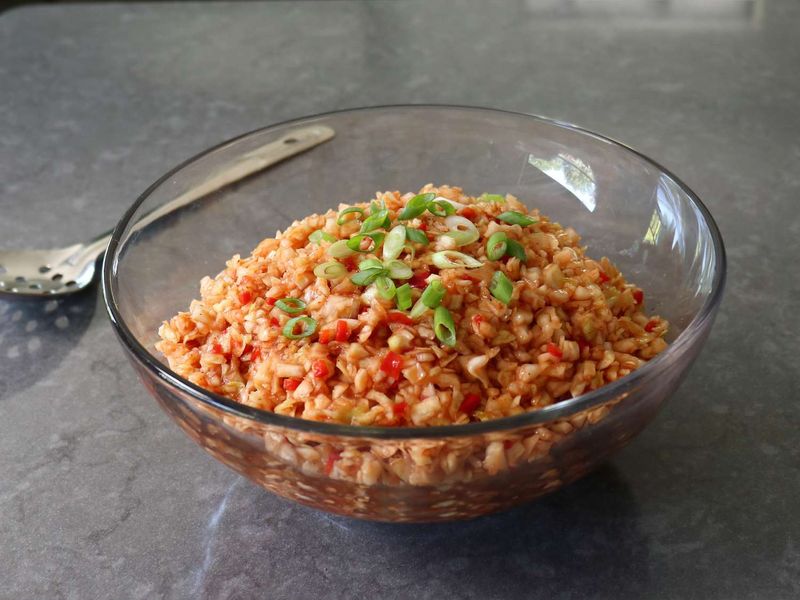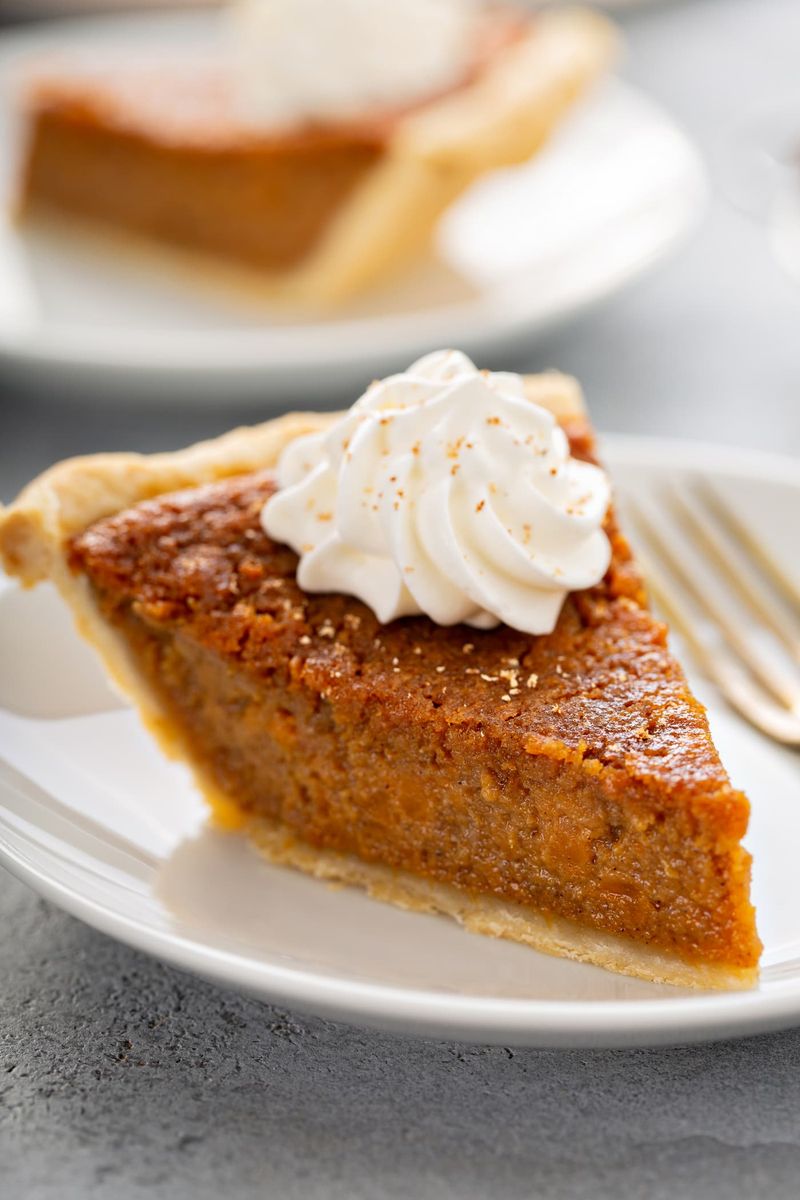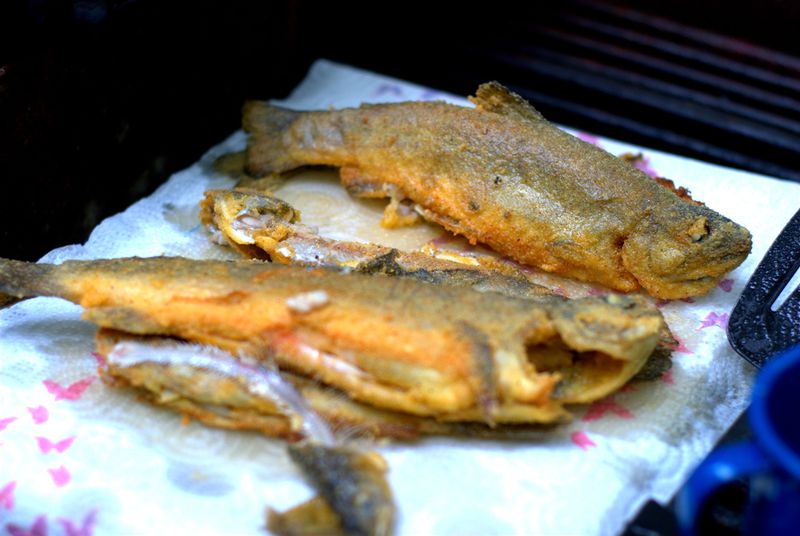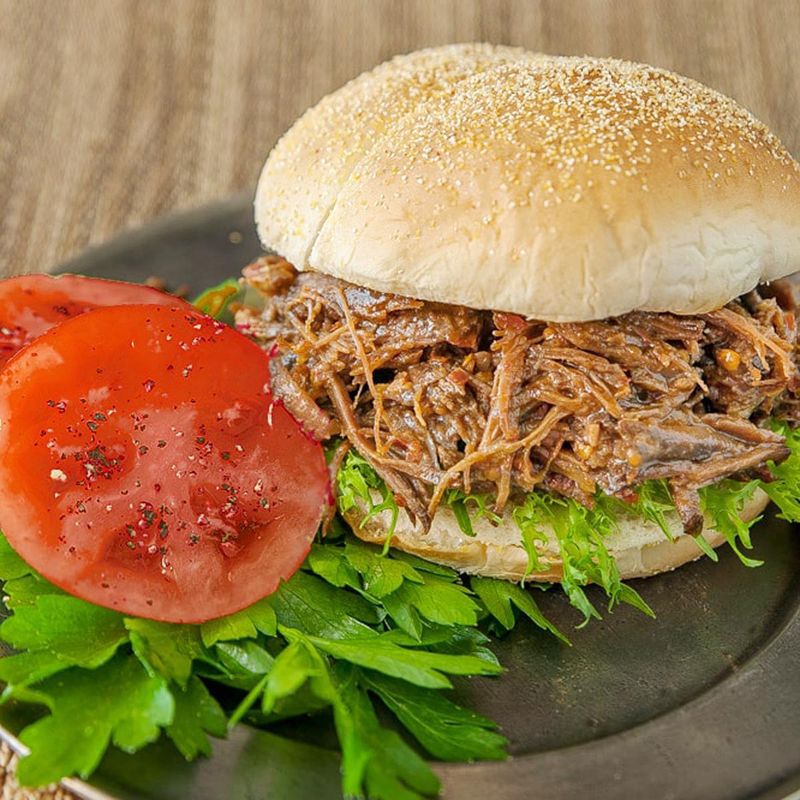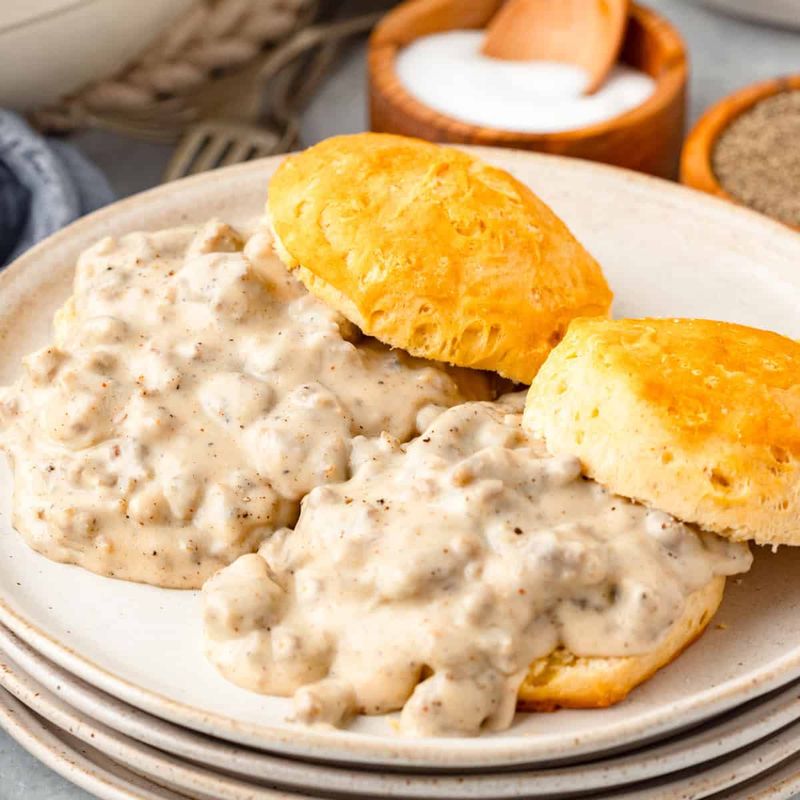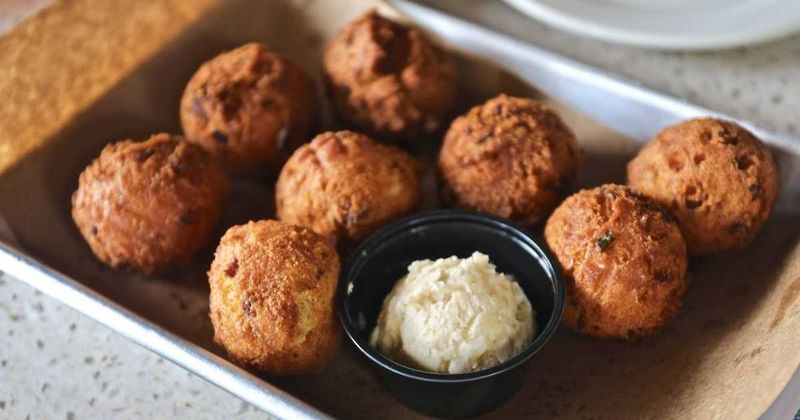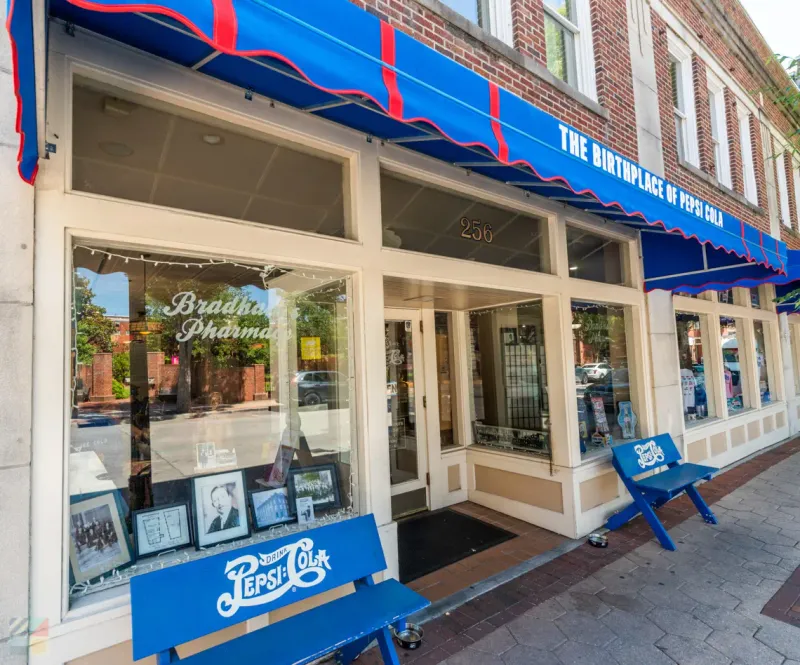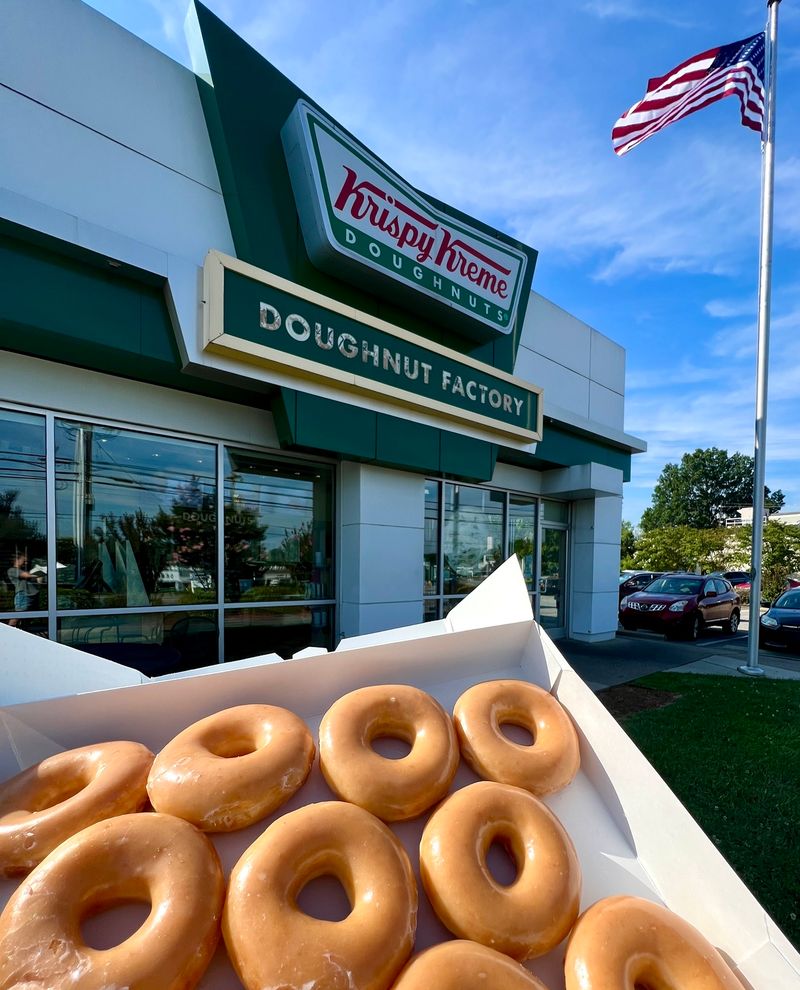North Carolina has a food culture all its own, shaped by mountains, coastlines, and generations of family recipes. Some dishes might look strange to visitors—like chili and slaw on a hot dog, or a pie crust made from crackers. But for locals, these foods tell the story of home, tradition, and pride in regional flavors that have been perfected over centuries.
Lexington Piedmont-Style Barbecue
Head west into the Piedmont region and barbecue takes a different turn. Here, pitmasters focus on pork shoulder instead of the whole animal, creating tender, smoky meat with a distinctive flavor profile. The sauce shifts too—adding a touch of ketchup to the vinegar base for a tangy-sweet combination that locals swear by.
Red slaw is the traditional sidekick, made with cabbage dressed in the same vinegar-ketchup mixture rather than creamy mayo. For someone expecting white coleslaw, that first red-tinged forkful can be quite surprising. But one taste usually converts skeptics into believers.
Carolina-Way Hot Dogs or Burgers
Order a hot dog “Carolina-way” and you’ll get something that might confuse first-timers. Chili, coleslaw, onions, and mustard all pile onto one bun in a combination that sounds chaotic but tastes amazing. Some places add extras like relish or special seasonings that make each version unique.
The mix of hot chili with cool, crunchy slaw creates texture and temperature contrasts in every bite. For locals, eating a plain hot dog feels like something’s missing. This style shows up at roadside stands, diners, and backyard cookouts across the state, proving its staying power in North Carolina food culture.
Livermush
Livermush makes many newcomers pause before taking that first bite. Made from pig liver, head parts, and cornmeal formed into a loaf, it gets sliced thin and fried until the edges turn crispy. Western North Carolina claims this breakfast staple as a point of pride, even hosting an annual festival in its honor.
The texture is similar to scrapple but with its own distinct flavor profile. Locals grew up eating it on white bread with mustard and tomato, or alongside eggs and grits. If you didn’t experience it as a child, the ingredients list might sound intimidating, but the taste wins over many brave souls.
Moravian Chicken Pie
The Moravian community around Winston-Salem brought this simple yet satisfying dish to North Carolina centuries ago. A double crust surrounds nothing but tender chicken chunks—no vegetables, no complicated seasonings, just pure poultry goodness. Rich gravy gets ladled on the side rather than baked inside.
For people used to chicken pot pies loaded with carrots, peas, and potatoes, this stripped-down version feels almost stark. But that’s exactly the point—the Moravians believed in letting quality ingredients speak for themselves. Locals consider it ultimate comfort food, especially during cold weather or family celebrations when tradition matters most.
Atlantic Beach Pie
This coastal creation sounds odd until you taste it—then everything clicks into place. A crust made from crushed saltine crackers provides a salty, crunchy foundation for tangy lemon curd filling. Whipped cream gets piled on top, finished with a sprinkle of sea salt that ties everything together.
The salt-sweet combination captures the essence of beach life in North Carolina. Born at a restaurant in Atlantic Beach, the pie has become a symbol of coastal dessert innovation. First-timers often raise eyebrows at the cracker crust concept, but locals know that briny edge makes the lemon flavor pop in ways regular pastry never could.
Eastern-Style Whole-Hog Barbecue
In eastern North Carolina, barbecue isn’t just meat on a grill—it’s an art form passed down through generations. Pitmasters cook an entire hog low and slow over hardwood coals, then chop or pull every bit of meat. The sauce? Pure vinegar mixed with crushed red pepper and spices, with absolutely no ketchup in sight.
Outsiders often mistake it for ordinary pulled pork, but locals know the difference immediately. The vinegar cuts through the rich pork fat in a way tomato-based sauces never could. Arguments over which county does it best can get surprisingly heated at family gatherings.
Calabash-Style Seafood
Named after the tiny coastal town of Calabash, this cooking method has spread far beyond its borders. Fresh-caught shrimp, flounder, and oysters get dipped in a light cornmeal batter and quickly fried until golden. The thin coating lets the delicate seafood flavors shine through rather than hiding them under heavy breading.
Many restaurants serve it buffet-style, letting diners pile their plates high with multiple types of seafood. For someone expecting fancy plated presentations, this casual all-you-can-eat approach feels distinctly local. Hushpuppies and coleslaw complete the experience, creating a meal that coastal North Carolinians consider the only proper way to eat fried seafood.
Pimento Cheese as Regional Staple
Pimento cheese appears at every potluck, tailgate party, and family gathering across North Carolina. Sharp cheddar blends with mayo, cream cheese, and chopped pimentos to create a spread that locals consider essential. Some families guard their exact recipe proportions like state secrets, passing them down through generations.
Sandwiches, crackers, celery sticks—pimento cheese goes on everything. For outsiders, the idea of a cheese spread achieving regional icon status might seem puzzling. But North Carolinians know this orange-flecked mixture represents hospitality, tradition, and the kind of simple food that brings people together no matter the occasion or season.
Sonker
Sonker remains one of North Carolina’s best-kept dessert secrets, especially in the foothills region. This deep-dish creation features seasonal fruits like blackberries, muscadines, or even sweet potatoes baked in a sweet, soupy base. The crust varies—some versions have top and bottom layers, others just a top.
What makes sonker truly unique is the “dip”—a sweet, milky sauce that gets poured over the hot dessert at serving time. To locals, this nostalgic treat connects them to simpler times and family farms. Visitors often mistake it for cobbler or pie, but sonker stands in its own category with a texture and presentation all its own.
Chicken Mull
When temperatures drop, North Carolinians gather around big pots of chicken mull. This creamy stew features poached chicken swimming in a milk or cream-based broth enriched with butter. Some versions include potatoes, while others keep it simple with just chicken and that silky liquid.
Community fundraisers and church suppers often feature chicken mull as the main attraction. The name itself confuses newcomers who’ve never heard the term “mull” applied to anything but spiced wine. But locals recognize it as cold-weather comfort in a bowl, the kind of dish that warms you from the inside out and tastes even better the next day.
Red Slaw
Red slaw deserves its own spotlight beyond just being a barbecue sidekick. Finely chopped cabbage gets dressed in a mixture of ketchup, vinegar, and spices—no mayonnaise anywhere in sight. The result is a tangy, slightly sweet slaw with a distinctive reddish hue that gives it its name.
For someone expecting creamy white coleslaw, this version can be quite the surprise. The vinegar-based dressing cuts through rich barbecue in a way mayo-based slaws never manage. It’s especially popular with Lexington-style barbecue, where the red slaw complements the tomato-tinged sauce perfectly. Locals wouldn’t dream of serving barbecue without it.
Sweet Potato Pie with Local Twist
North Carolina grows more sweet potatoes than any other state, so naturally the sweet potato pie here takes on special significance. Local versions often feature specific spice combinations and texture preferences that differ from other regions. Some families add a hint of bourbon, others swear by extra vanilla or particular ratios of cinnamon and nutmeg.
The filling achieves a silky smoothness that melts on your tongue. For people who grew up with pumpkin pie as the standard, sweet potato might seem like an odd substitute at first. But North Carolinians know their orange-fleshed tubers create a dessert that’s richer, smoother, and more complex than pumpkin could ever hope to be.
Fresh Local Trout from the Mountains
Western North Carolina’s cold mountain streams produce some of the finest trout you’ll ever taste. Brook, brown, and rainbow trout all thrive in these waters, ending up on plates across the region. Preparations range from simple pan-frying to sophisticated blackening techniques, but the fish always takes center stage.
For folks accustomed to ocean seafood, freshwater trout might seem like just another fish. But mountain residents know these delicate fillets represent something special—the pure, cold waters of the Appalachians translated into flavor. Many restaurants source their trout from local farms or fishermen, keeping the tradition alive and supporting the mountain economy at the same time.
Ground Steak Sandwich
Walk into certain North Carolina diners and you’ll spot “ground steak sandwich” on the menu—a term that puzzles newcomers. It’s essentially a ground beef patty, sometimes more like chopped steak, served on a bun or bread slices. But here’s the twist: it gets smothered in gravy or topped with cooked onions in ways a regular burger never would.
The name reflects old-school diner culture where working folks wanted something hearty and affordable. Locals don’t question why it’s called steak when it’s clearly ground beef—they just know it hits the spot. This regional menu item shows up in food roundups as a distinctly North Carolina tradition worth preserving.
Biscuits and Gravy with Local Flavor
Sure, biscuits and gravy exist across the South, but North Carolina puts its own stamp on this breakfast classic. The biscuits tend to be particularly fluffy, often made with White Lily flour or similar soft wheat varieties. Sausage gravy recipes vary by region, with some areas preferring spicier seasonings while others keep it mild and creamy.
What looks like generic breakfast food to outsiders actually contains subtle regional differences locals spot immediately. The ratio of pepper to cream, the type of sausage used, even the biscuit texture—all these details matter. It’s comfort food that often accompanies other North Carolina specialties, creating a breakfast spread that defines home for many residents.
Hushpuppies with Regional Pairing
Hushpuppies might not be exclusive to North Carolina, but the way they’re served here makes them feel distinctly local. These deep-fried cornmeal balls show up alongside seafood platters at coastal restaurants and next to barbecue plates inland. The exact recipe—how sweet, what size, which seasonings—varies by establishment and region.
In Calabash-style seafood restaurants, hushpuppies come standard with every meal, as expected as napkins or water. Some versions include onions, others add a touch of sugar or jalapeño. For visitors ordering seafood in coastal North Carolina, the automatic appearance of hushpuppies might seem odd at first. But locals know a proper seafood meal isn’t complete without these crispy, golden companions.
Pepsi as Regional Pride
Pepsi might be a global brand now, but it was invented right in New Bern, North Carolina, back in 1898. Locals take serious pride in this fact, often choosing Pepsi over Coke as a matter of regional loyalty. You’ll find Pepsi memorabilia in restaurants, museums, and homes across the state.
For outsiders, it’s just another cola choice. But for North Carolinians, ordering Pepsi connects them to state history and local innovation. The original pharmacy where Caleb Bradham created his “Brad’s Drink” has become a pilgrimage site for soda enthusiasts. This beverage loyalty might seem silly to some, but it represents the kind of hometown pride that runs deep in North Carolina culture.
Krispy Kreme Doughnuts as Local Institution
Krispy Kreme started in Winston-Salem in 1937 and remains a source of state pride despite going national. When the “Hot Now” sign lights up, locals know fresh glazed doughnuts are coming off the line—still warm, practically melting in your mouth. The chain might have hundreds of locations now, but North Carolinians claim the originals taste better here.
Visitors might wonder what makes these doughnuts different from any other shop. Locals will tell you it’s about timing, temperature, and that perfect glaze ratio that only happens when everything aligns. Getting Krispy Kreme for special occasions or weekend treats is a childhood memory shared by generations of North Carolinians.
